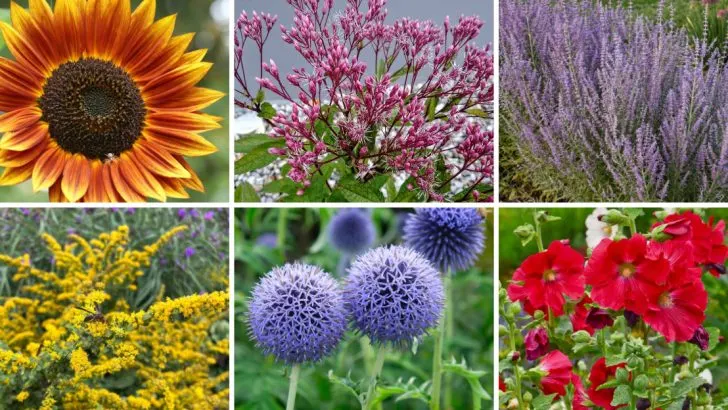Tall flowers can be stunning, but dealing with floppy stems and constant staking? Not so much. If you’ve ever walked outside after a storm to find your flowerbed looking like a crime scene of toppled blooms, you know the frustration. Some flowers just can’t hold themselves up without help—but thankfully, not all of them are drama queens.
There are plenty of tall flowers that actually know how to stand on their own. Strong stems, sturdy habits, and just the right structure make them a breeze to grow—no bamboo stakes, string, or last-minute rescue missions required. If you want height and impact without the extra hassle, these 17 flowers have your back.
Sunflower (Helianthus annuus)
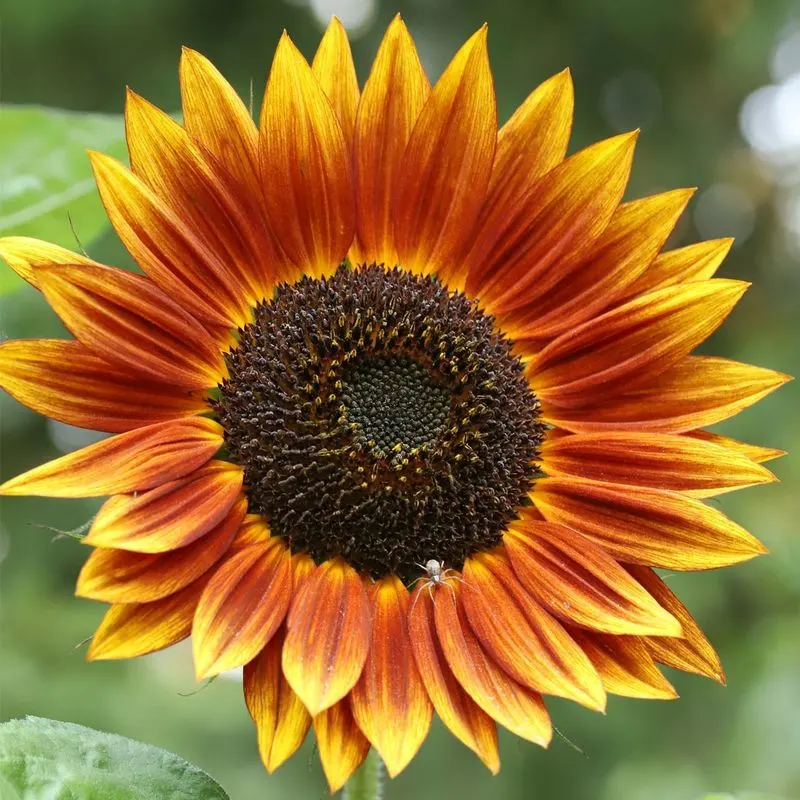
Sunflowers, with their towering height and brilliant yellow petals, are nature’s sunny giants. These charming blooms can soar over ten feet tall, making them a striking addition to any garden. Their thick, sturdy stems are capable of supporting the dazzling flowers without assistance. As sunflowers track the sun, they bring a dynamic energy to their surroundings. Interestingly, these flowers are known to improve soil health by absorbing toxins. Plant them in a sunny location and enjoy their cheerful presence as they sway gracefully. With their resilience and beauty, sunflowers are a gardener’s delight.
Joe-Pye Weed (Eutrochium purpureum)
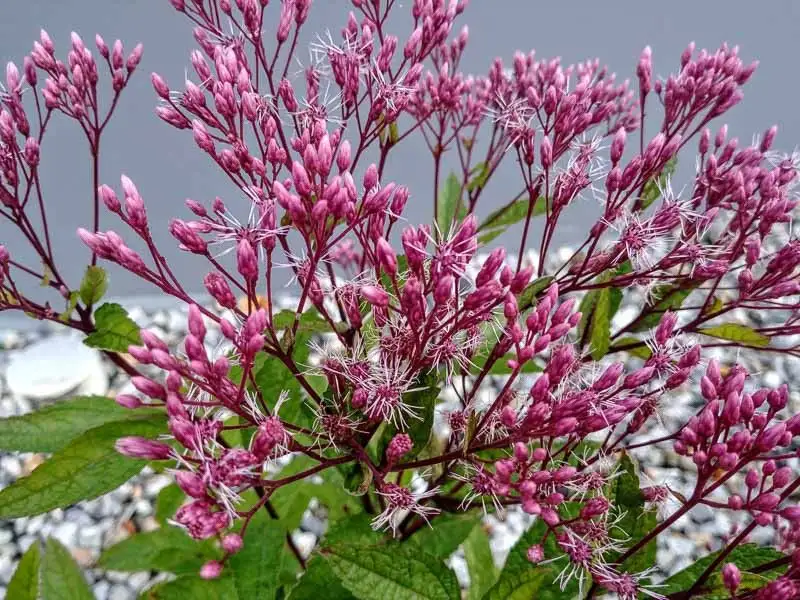
Joe-Pye Weed is a wildflower with a personality as big as its blooms. Standing tall in the garden, its fluffy, mauve-pink flowers attract butterflies and bees. Growing up to seven feet, these hardy perennials thrive in moist soil and partial shade. Their robust stems negate any need for staking, making them a go-to for low-maintenance gardening. Joe-Pye Weed adds a whimsical charm to cottage gardens. Historically, this plant was used for medicinal purposes by Native Americans, adding a touch of history to its allure. It’s an unassuming hero of natural beauty.
Russian Sage (Perovskia atriplicifolia)

Russian Sage offers a breathtaking view with its lavender-blue flowers and aromatic, silvery foliage. These perennials can reach heights of up to five feet, displaying a wispy yet robust structure. Perfect for sunny spots, Russian Sage is a drought-tolerant marvel that doesn’t require staking. Its airy flowers bring texture and color to borders or garden beds. The scent of the foliage is reminiscent of sage, adding a sensory delight. Known for attracting pollinators, this plant is a great addition to eco-friendly gardens, enhancing biodiversity while looking effortlessly elegant.
Goldenrod (Solidago spp.)

Goldenrod is a beacon of sunshine in late summer gardens. Its bold, yellow flower clusters stand atop robust stems that can reach up to four feet. Well-loved by pollinators, this native plant thrives without staking, even in windy conditions. Despite its undeserved reputation for causing allergies, goldenrod is actually not the culprit—ragweed is. Its resilience and adaptability make it suitable for a variety of soil types. Goldenrod’s bright beauty and ecological benefits make it a fantastic choice for gardeners looking to support wildlife and enjoy vibrant color.
Globe Thistle (Echinops ritro)
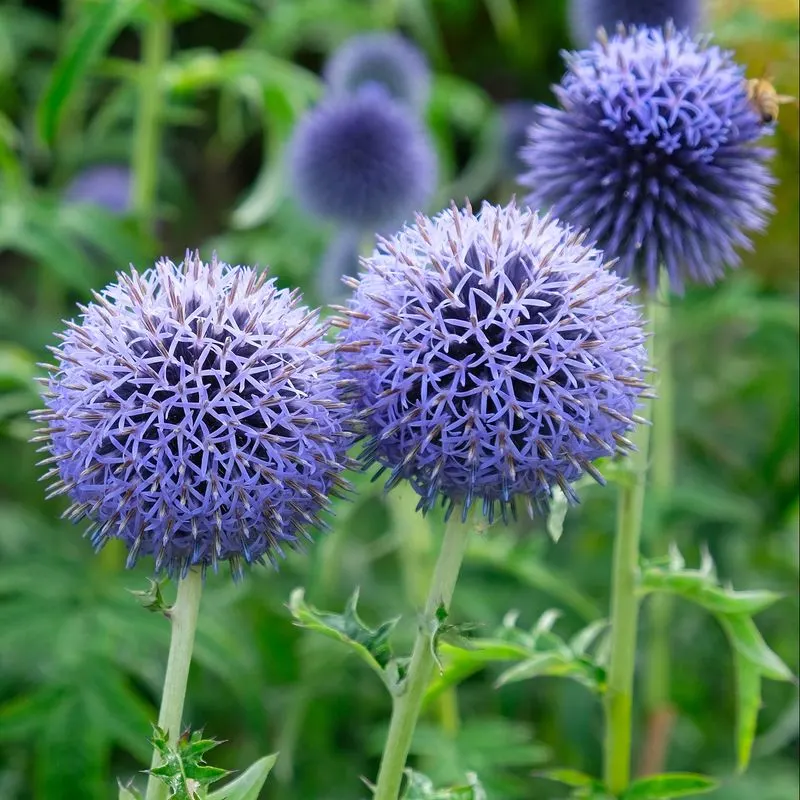
Globe Thistle captivates with its unique, spiky blue flower heads that resemble orbs of steel. These architectural plants grow up to four feet tall, supported by thick, unyielding stems. Their striking appearance makes them a standout in any garden setting. Globe Thistles are drought-resistant and require little maintenance, thriving in full sun and well-drained soil. They attract bees and butterflies, promoting a healthy ecosystem. With their bold look and hardy nature, these thistles bring both structure and color to perennial borders, making them a favorite among gardeners.
Hollyhock (Alcea rosea)
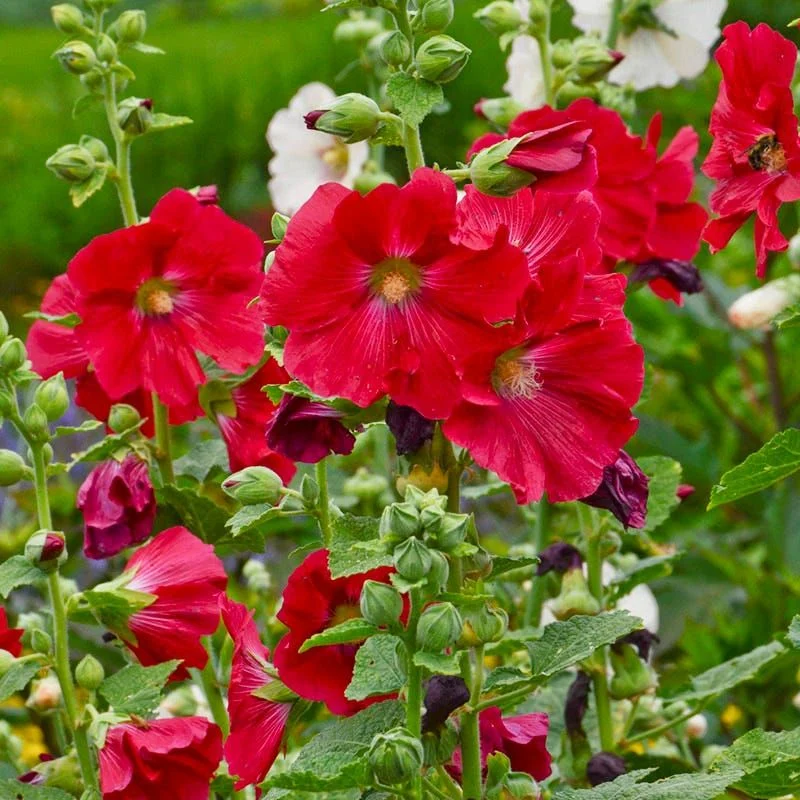
Hollyhocks evoke a sense of cottage garden nostalgia with their tall spires of blooms. Reaching heights of up to eight feet, these biennials produce large, funnel-shaped flowers in an array of colors. Their strong central stems require no staking, making them perfect for creating vertical interest along fences or walls. Hollyhocks thrive in sunny locations and well-drained soil, attracting hummingbirds and butterflies. Despite their towering stature, they are surprisingly low-maintenance. Adding Hollyhocks to your garden brings a touch of old-world charm and vertical magnificence.
Delphinium (Delphinium spp.)
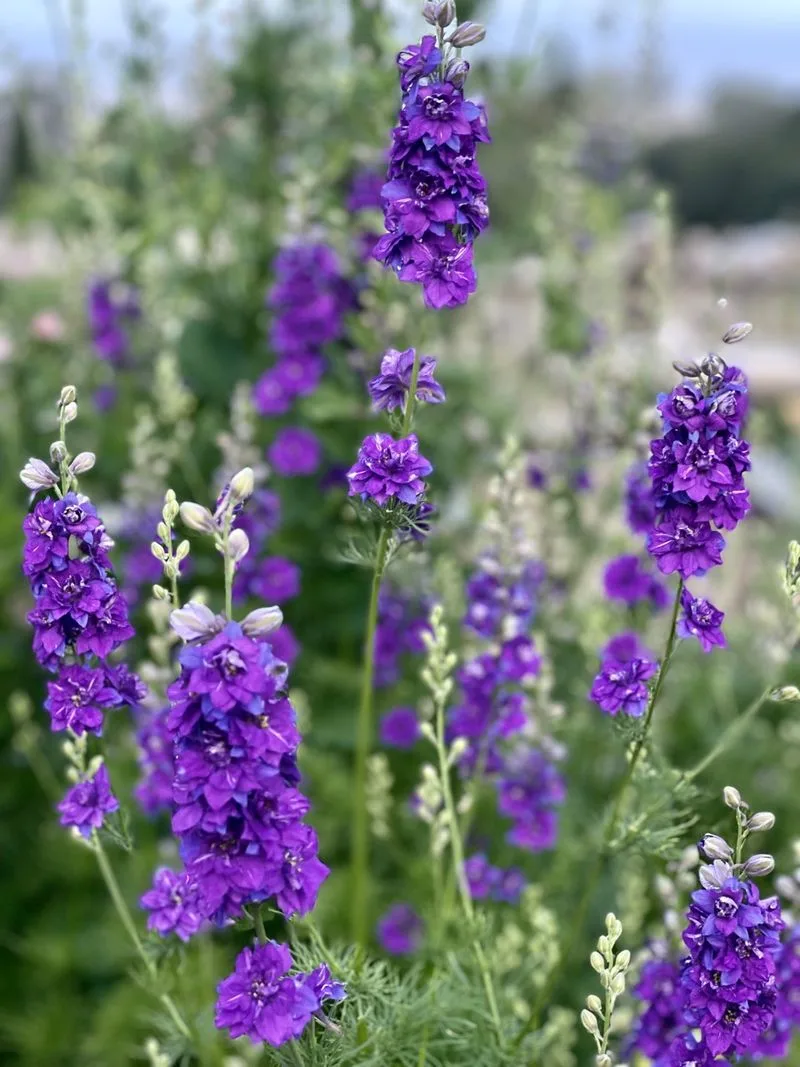
Delphiniums are the aristocrats of the flower world, bringing a regal touch with their towering spires of blue and purple blossoms. Growing up to six feet, these perennials command attention in any border. Though they appear delicate, delphiniums possess sturdy stems that stand tall without support. They love well-drained soil and full sun, providing a feast for the eyes and a haven for pollinators. Delphiniums are not just eye-catching; they add a dramatic flair to gardens, making them a must-have for those who adore classic beauty and elegance.
Prairie Dock (Silphium terebinthinaceum)
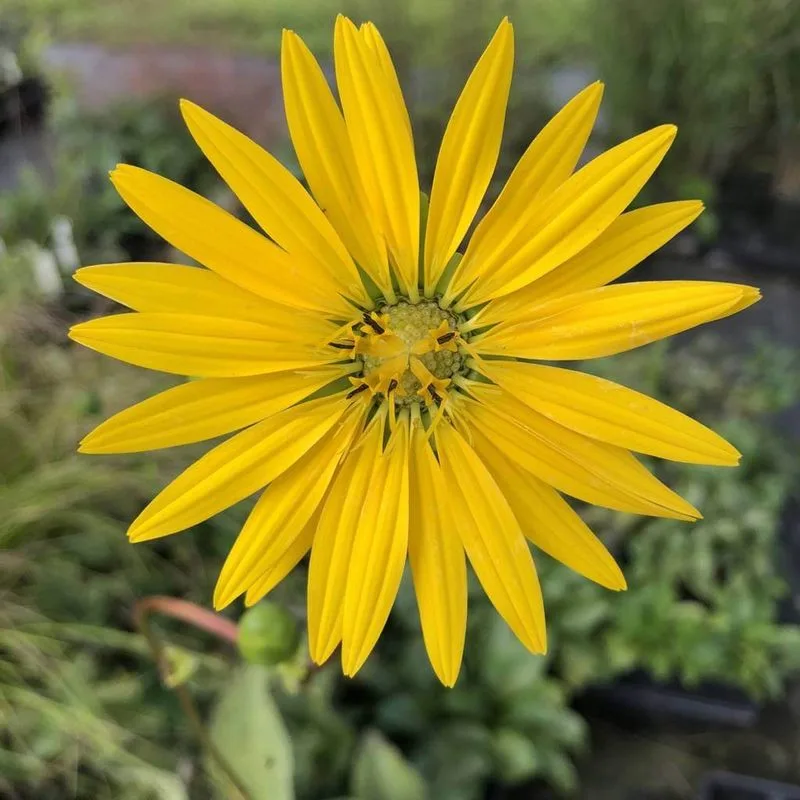
Prairie Dock stands as a testament to nature’s ingenuity, with its towering, sunflower-like blooms. These native plants can grow over ten feet tall, with leaves that resemble elephant ears. Their thick, durable stems ensure they remain upright, even in strong winds. Prairie Dock thrives in prairies and meadows, providing habitat for wildlife and pollinators. Its bright yellow flowers bring sunshine to the landscape, and its deep roots help stabilize soil. Prairie Dock is an eco-friendly choice for gardeners wanting to recreate natural habitats while adding a splash of golden color.
Cup Plant (Silphium perfoliatum)

The Cup Plant is a marvel of botanical architecture, with its large leaves forming natural reservoirs for rainwater. This unique adaptation not only supports the plant’s growth but also provides hydration for birds and insects. Reaching up to eight feet, its sturdy stems hold bright yellow, daisy-like flowers that enliven any garden. Cup Plants thrive in moist soil and full sun, making them ideal for rain gardens. Their ecological benefits and visual appeal make them a favorite among conservationists and gardeners alike, ensuring a thriving garden ecosystem.
Compass Plant (Silphium laciniatum)
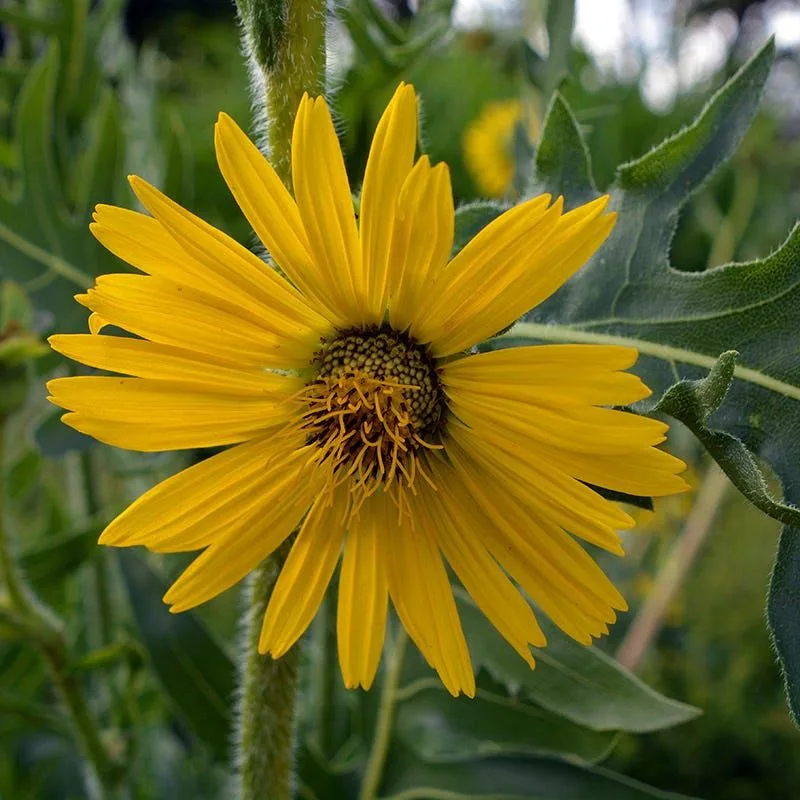
The Compass Plant is a navigational wonder, with its leaves aligning north-south to minimize sun exposure. This tall prairie plant reaches heights of up to nine feet, showcasing vibrant yellow flowers atop strong, unyielding stems. It thrives in sunny, open areas and is drought-tolerant once established. The Compass Plant supports pollinators and provides habitat for various wildlife. Its deep roots play a role in soil stabilization. By incorporating Compass Plants into your garden, you not only enhance its beauty but also contribute to a stable, healthy environment.
Culver’s Root (Veronicastrum virginicum)
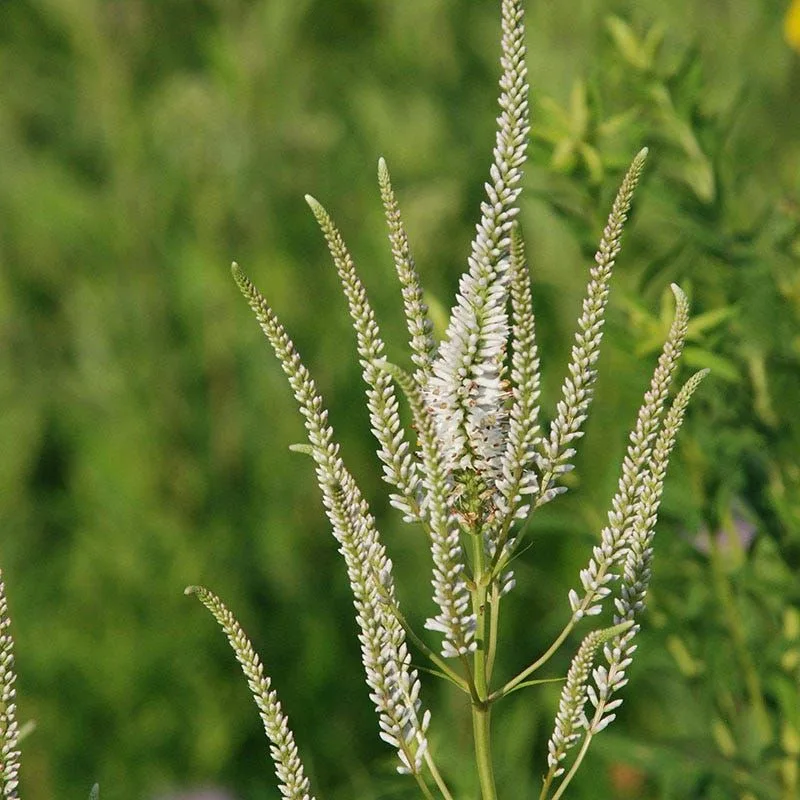
Culver’s Root adds an elegant touch to gardens with its tall, slender spikes of white or pale pink flowers. Growing up to six feet, these perennials possess strong stems that remain upright without staking. They flourish in sunny or partially shaded areas with moist, well-drained soil. Culver’s Root attracts butterflies and bees, playing an essential role in pollinator gardens. With its refined appearance and ecological benefits, it’s an excellent choice for those seeking grace and function. The plant’s architectural beauty adds vertical interest and complements other perennials.
Ironweed (Vernonia spp.)

Ironweed lives up to its name with strong, resilient stems that support clusters of vivid purple flowers. Standing up to eight feet, these native perennials are a striking addition to wildflower gardens. They thrive in full sun and moist soil, attracting a variety of pollinators. Ironweed’s robust nature means it requires no staking, even in harsh weather. These plants add a pop of color and height, making them ideal for creating dramatic backdrops. Their historical use in traditional medicine adds depth to their charm, making Ironweed a gardener’s treasure.
New York Ironweed (Vernonia noveboracensis)
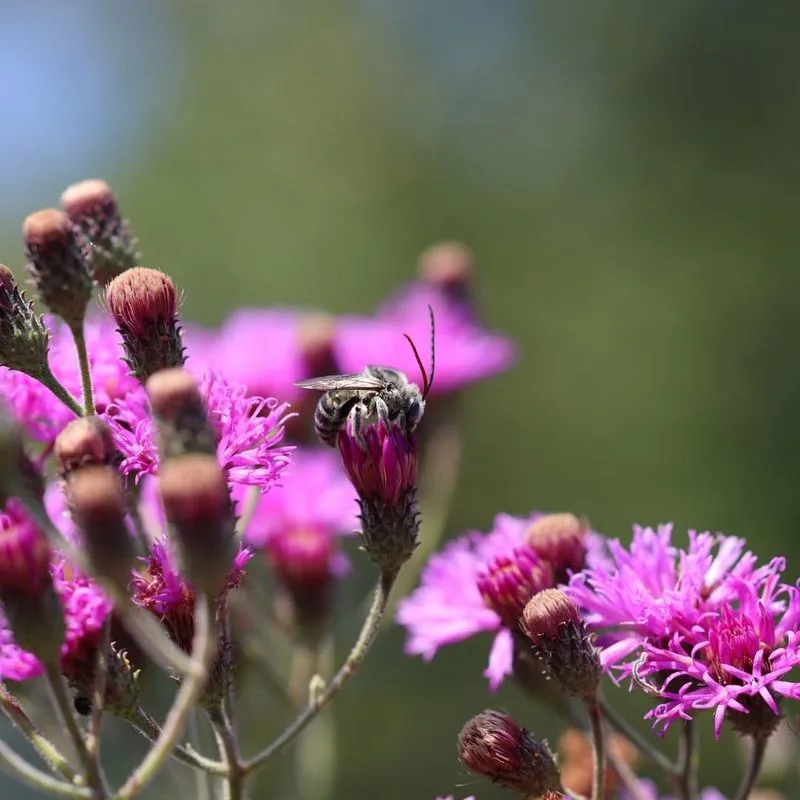
New York Ironweed stands tall with its striking purple flowers and robust stems. Growing up to seven feet, this perennial thrives in moist soils and full sun. It’s a favorite among pollinators, providing nectar for bees and butterflies. Despite its delicate-looking blooms, New York Ironweed is remarkably hardy, requiring no staking. Its deep roots help improve soil health by preventing erosion. A staple in native plant gardens, New York Ironweed adds vertical interest and a splash of vibrant color, making it a standout choice for eco-conscious gardeners.
Swamp Milkweed (Asclepias incarnata)
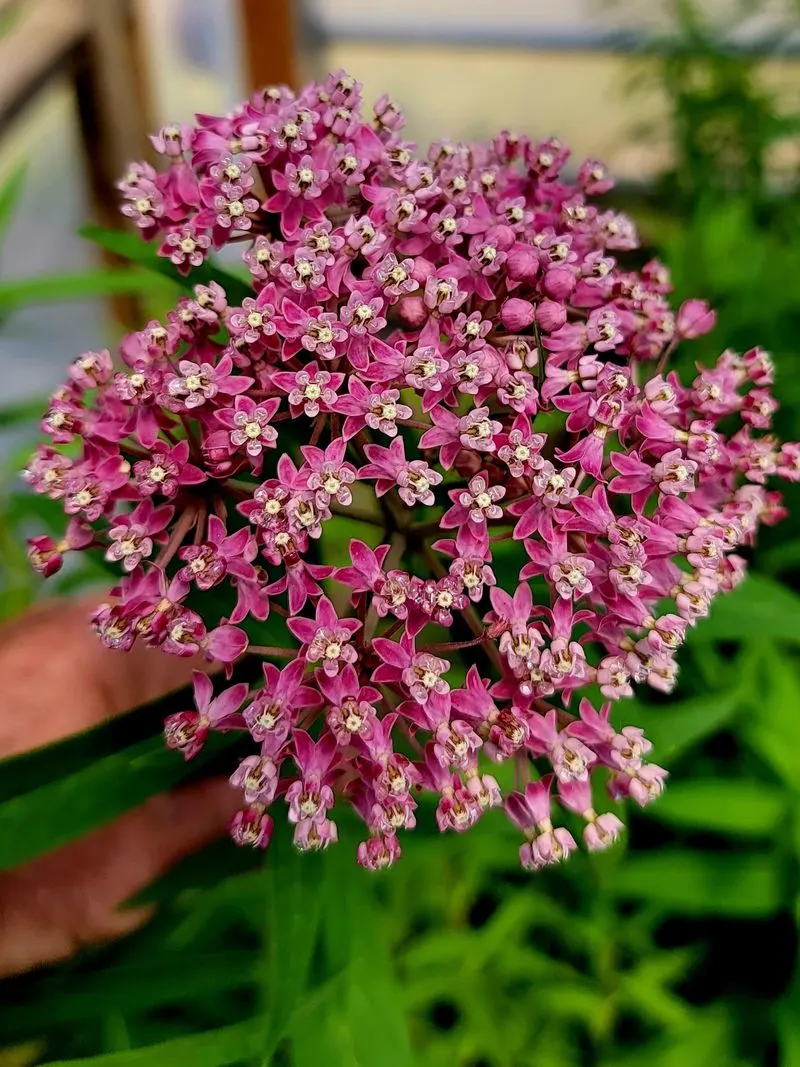
Swamp Milkweed is more than just a pretty face; it’s a boon for butterflies, especially the Monarch. This native perennial reaches up to five feet with clusters of pink flowers that exude a light vanilla scent. Its sturdy stems ensure it remains upright in wet conditions, perfect for rain gardens or pond edges. Swamp Milkweed is a vital component in pollinator support, attracting a myriad of insects. Its deep roots aid in water filtration, enhancing wetland health. By planting Swamp Milkweed, you create a vibrant, wildlife-friendly habitat.
Cardinal Flower (Lobelia cardinalis)
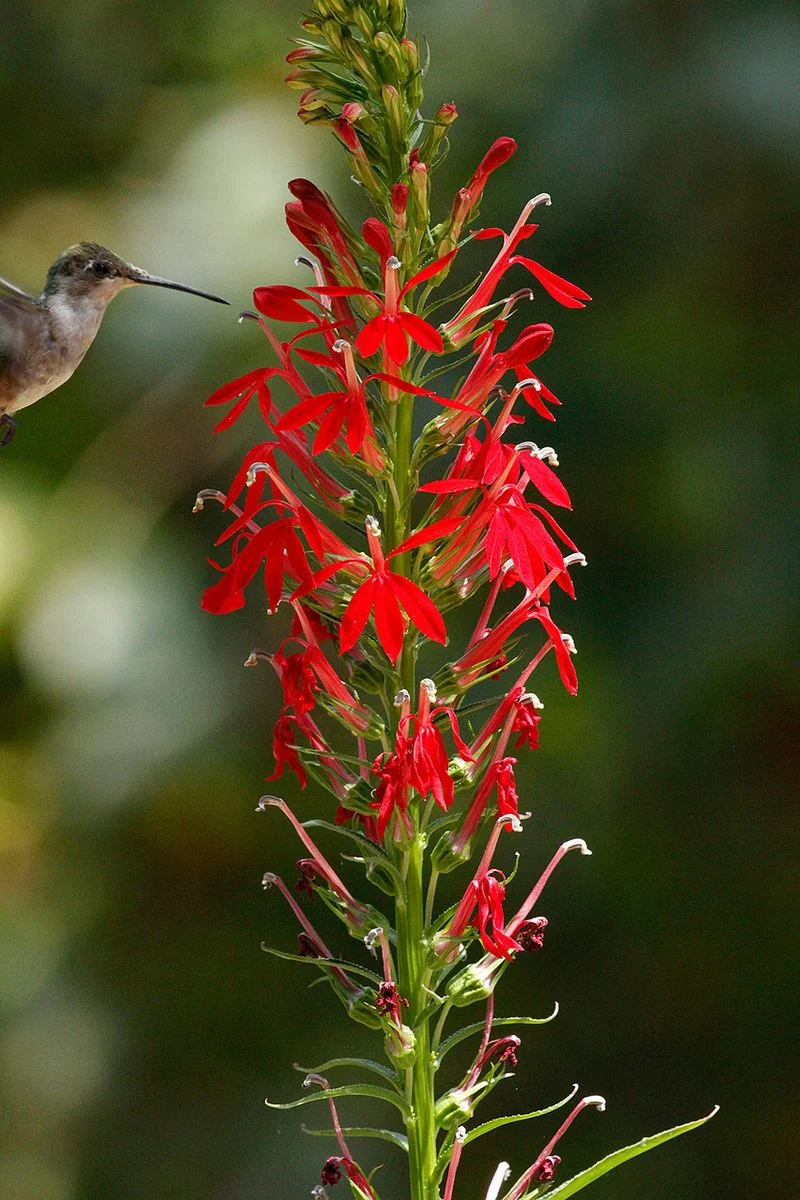
The Cardinal Flower is a crimson spectacle that draws hummingbirds like a magnet. Its striking red spikes can grow up to four feet, making it a vibrant focal point in moist or wet gardens. Despite their delicate appearance, the stems are surprisingly robust. Cardinal Flowers prefer partial shade and consistently moist soil, thriving in rain gardens or along streams. Their vivid color and ecological importance make them a favorite among gardeners aiming to support local wildlife. This showstopper of a plant adds fiery color and ecological value.
Blazing Star (Liatris spicata)
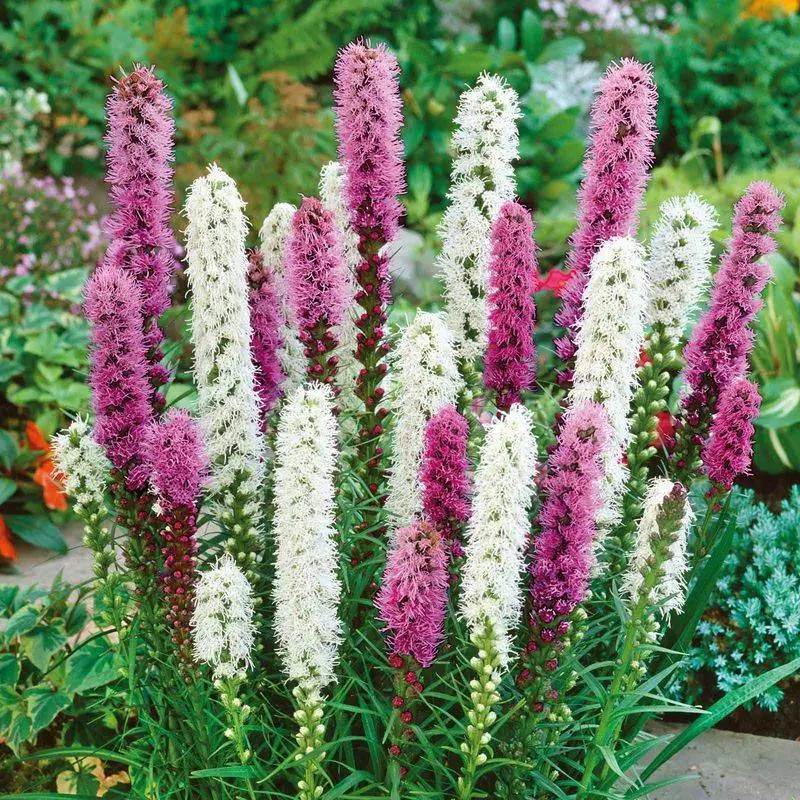
Blazing Star is a prairie native known for its tall, fluffy spikes of purple flowers. Reaching heights of up to five feet, this perennial adds vertical interest with its slender, upright form. Its sturdy stems require no staking, even in breezy conditions. Blazing Star thrives in sunny areas with well-drained soil, attracting a host of pollinators, including bees and butterflies. Its ability to withstand drought makes it an excellent choice for sustainable gardening. This plant not only beautifies spaces but also supports biodiversity, making it a garden essential.
Tall Verbena (Verbena bonariensis)

Tall Verbena embodies grace and movement with its long, airy stems and clusters of small purple flowers. Growing up to six feet, it dances in the breeze, bringing lightness to garden borders. Despite its delicate look, the stems are resilient, requiring no staking. Tall Verbena thrives in full sun and well-drained soil, attracting butterflies and bees. Its elegant form and cheerful flowers make it a versatile addition to any landscape. By incorporating Tall Verbena, you add both height and motion to your garden, creating a lively, dynamic environment.

